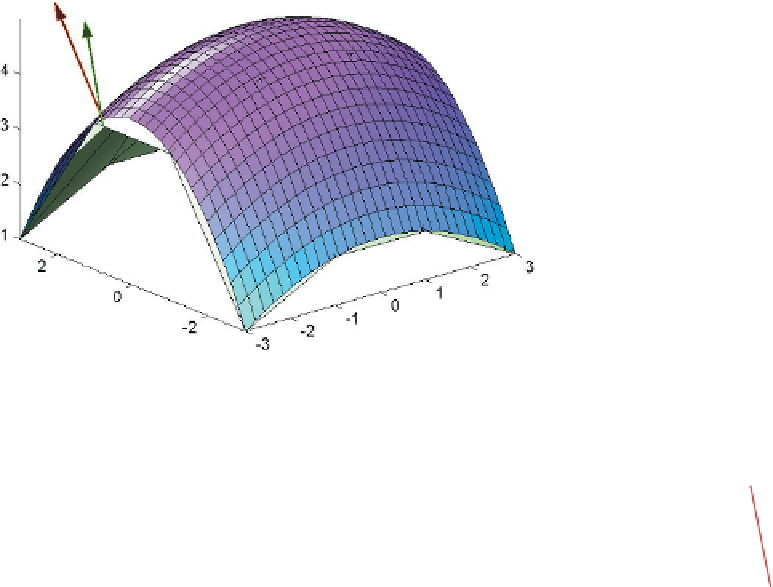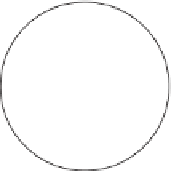Graphics Reference
In-Depth Information
Figure 1.17: A semitransparent smooth surface and a normal vector to it (red), with a
polygonal approximation (white) within, and a normal vector to the polygonal mesh at a
corresponding point (green).
the angle between the outgoing vector and
n
being the same as the angle between
,
and
n
.
For other surfaces, incoming light scatters in many directions.
For completely diffuse surfaces, light scatters in every direction (Figure 1.18)
but the brightness of the reflected light varies in proportion to the absolute value of
the dot product
11
, that is, the cosine of the angle between the surface normal
and the incoming light direction.
12
So a surface that faces the light appears bright
from wherever one sees it, while a surface that's tilted a bit away from the light
appears dimmer. This kind of scattering was described by Lambert long before the
development of computer graphics. As a precondition for scattering, the surface
must be facing the light, that is,
|
·
n
|
0. (This
Lambertian reflectance
model
is discussed further in Chapters 6 and 27.)
·
n
<
Figure 1.18: Light arrives trav-
eling in direction
; it's reflected
in all directions. For a source
of fixed brightness, the intensity
of the reflected light is greatest
when
For somewhat shiny surfaces, the appearance of the surface depends on your
viewpoint; if you look at a surface in a well-lit room and move your head back and
forth, you may see highlights move on the surface. This can be modeled, with an
empirically decent fit, by saying that the reflected light is in proportion to
(
n
is perpendicular to the
h
)
k
·
surface.
for some exponent
k
, where
h
is computed from the average of the vector
from
the surface to the light and the vector
e
from the surface to the eye, by adjusting
that vector to have unit length, that is:
−
e
−
h
=
.
(1.4)
e
−
This model of scattering is due to Phong [Pho75] and Blinn [Bli77], and has been
widely used in graphics.
For surfaces in general, the reflected light is a combination of the diffuse,
somewhat shiny, and specular cases.
11. The dot product is reviewed in Section 7.6.4.
12. This description is so vague that it's almost meaningless; to make it sensible, we need
to discuss how we measure light brightness (a term we're using informally here), which
is quite subtle. For now, you should just imagine that brightness is measured from zero
to one in some unstated units.


















